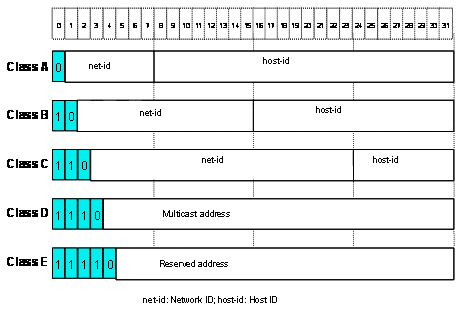Understanding the composition of an IP address is fundamental to grasping the nuances of networking. An IP address is a complex structure, split into two significant parts: the Network ID and the Host ID. While the Network ID identifies the network to which a host belongs, the Host ID uniquely pinpoints a host within that network.
In this article, we’ll delve into what a Host ID is, how it’s differentiated from a Network ID, and importantly, how to calculate it using logical NANDing with the subnet mask. For background, you may want to read our articles on IP Address and Network ID.
Jump to:
- What is a Host ID?
- Logical NANDing: The Calculation Process
- Step-by-Step Examples of Host ID Calculations
- Common Use-Cases for Host ID
- The-Importance-of-Understanding-Host-ID
- References
1. What is a Host ID?
The Host ID is the part of an IP address that uniquely identifies a specific host on a given TCP/IP network. When an IP address is assigned to a network interface, the Host ID ensures that each device can be pinpointed within the network for data routing and communication.

Contrast with Network ID
While the Network ID specifies which network the host is a part of, the Host ID zeroes in on the individual device within that network. Combined, the Network ID and the Host ID form the complete IP address, providing a hierarchical structure for routing data packets efficiently.
For example, if a host has an IP address of 172.16.8.55 on a network with a subnet mask of 255.255.0.0 (the default subnet mask), the host ID is 0.0.8.55 or simply 8.55. The host ID uniquely identifies the host, but only within the boundary of the network ID for the network on which the host is installed.
2. Logical NANDing: The Calculation Process
Explaining NANDing
Logical NANDing is an operation where each corresponding pair of bits in two binary numbers is subjected to the NAND operation. NANDing the binary form of the IP address with the binary form of the subnet mask will reveal the Host ID.
Relevance in Host ID Calculation
This binary operation is essential in segregating the Network ID from the Host ID. NANDing effectively filters out the Network ID, leaving the Host ID as a result. This calculation is vital for routing and is implemented at a fundamental level in networking hardware.
3. Step-by-Step Examples of Host ID Calculations
Different Subnet Masks
Understanding Host ID calculations isn’t complete without working through examples. Let’s consider an IP address of 192.168.1.10 and subnet masks 255.255.255.0, 255.255.255.128, and 255.255.255.192.
- Example with Subnet Mask 255.255.255.0
- IP Address in Binary:
11000000.10101000.00000001.00001010 - Subnet Mask in Binary:
11111111.11111111.11111111.00000000 - NAND Operation Result:
00000000.00000000.00000000.00001010 - Host ID in Decimal:
0.0.0.10
- IP Address in Binary:
- Example with Subnet Mask 255.255.255.128
- IP Address in Binary:
11000000.10101000.00000001.00001010 - Subnet Mask in Binary:
11111111.11111111.11111111.10000000 - NAND Operation Result:
00000000.00000000.00000000.00001010 - Host ID in Decimal:
0.0.0.10
- IP Address in Binary:
- Example with Subnet Mask 255.255.255.192
- IP Address in Binary:
11000000.10101000.00000001.00001010 - Subnet Mask in Binary:
11111111.11111111.11111111.11000000 - NAND Operation Result:
00000000.00000000.00000000.00001010 - Host ID in Decimal:
0.0.0.10
- IP Address in Binary:
Interpretation of Results
From the above examples, it’s evident that the NANDing operation isolates the Host ID portion of the IP address, irrespective of the subnet mask used. This is fundamental for routing within variously configured networks.
4. Common Use-Cases for Host ID
Intranet and Internet
The Host ID serves an essential function whether in a closed intranet or the broader Internet. In intranets, Host IDs help in directing traffic to specific devices within a private network. On the Internet, they work in tandem with Network IDs to route data to the correct machine among billions.
Special Cases: Broadcast and Network Addresses
The all-zeroes and all-ones Host IDs are reserved for network and broadcast addresses, respectively. These are special cases that serve important functions in networking.
5. The Importance of Understanding Host ID
Practical Implications
Understanding Host ID calculation is crucial for network administrators, cybersecurity experts, and anyone responsible for network design and routing.
Networking Best Practices
A deep understanding of how Host IDs are calculated and function can be immensely beneficial in implementing networking best practices, troubleshooting, and optimizing data routes.
6. References
- Books:
- “Computer Networks” by Andrew S. Tanenbaum and David J. Wetherall
- “TCP/IP Illustrated” by W. Richard Stevens
- RFCs:
- Websites: